Rarely does someone return from Bali with a litany of complaints. It does happen, especially after visits to tourist-heavy South Bali where people expecting their Eat, Pray, Love moment amidst rice fields are instead met with Instagram influencers doing headstands in front of temples. The problem is hardly ever the island itself, though, rather a matter of picking the wrong place for your travel personality. But trust us: the right one is out there and there are plenty of place to go in Bali. Whether you want to channel the Beach Boys on a “surfin’ safari” or venture out into the hinterland away from all things pop culture, your perfect Bali exists — just so long as you know where to look.
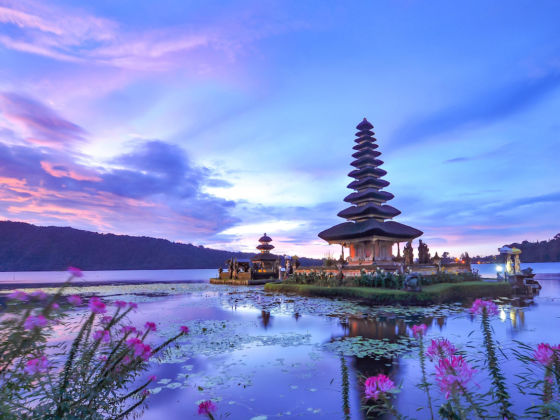

The Best Places to Go in Bali for Every Type of Traveler
For low-key luxury: Seminyak
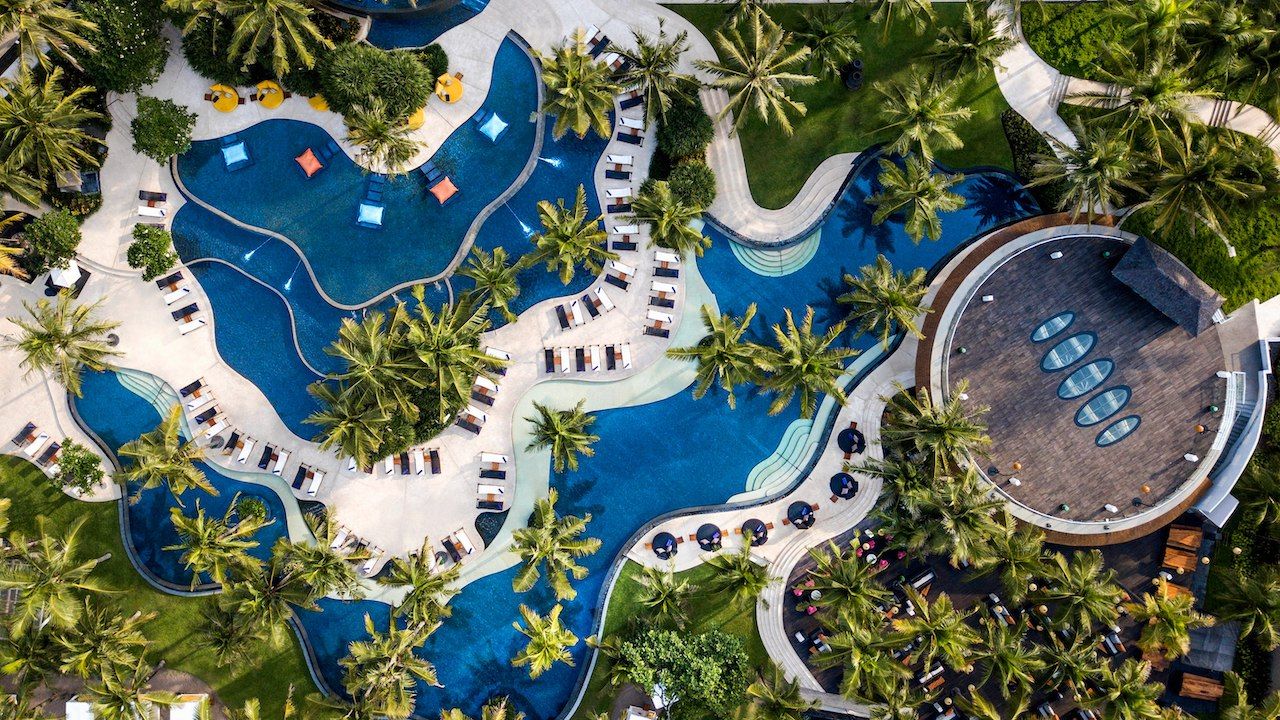
Photo: Marriott
Seminyak does boho chic better than the VIP areas at Coachella. Sophisticated yet fun, it’s a collage of upmarket hotels like The Oberoi and the W Bali Seminyak, fine dining menus with designer cocktail lists, glitzy boutiques and ritzy spas, and beach clubs with al fresco Supper Club vibes. When you need a break from celeb-style lounging and running up a tab of mojitos, try something cultural like a Balinese cooking class or a tour of the art galleries in town.
For serious surfers: Padang Padang and Uluwatu
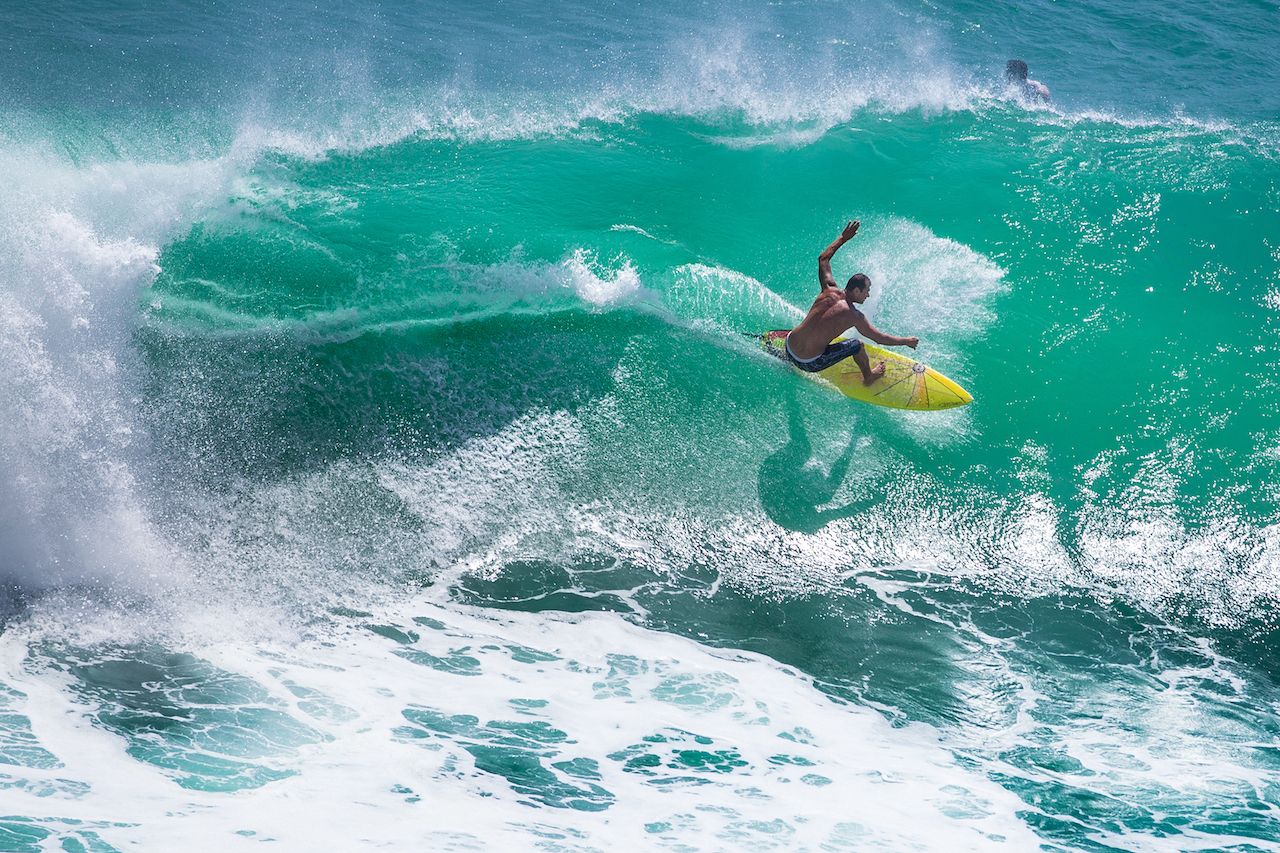
Photo: Hagen Production/Shutterstock
Bali’s southern tip has the best surf on the island. The main hubs are Padang Padang and Uluwatu, both on the east coast of the Bukit Peninsula. Padang Padang has two surf spots: Right, or Baby Pedang, with a mellower break for beginners, and Left. Pros favor the monster swells in Padang Padang Left, nicknamed the “Balinese Pipeline.” Time it right and you could even be in town during a major surf competition like the Rip Curl Cup.
Just south is Uluwatu, equally famous for its swells and its seaside temple. There are several breaks here. The most popular are The Peak and Outside Corners whereas Bombie is a notoriously rough break that also sees the biggest waves, enticing some and keeping others at bay. Surfers paddle out from a small cave beach hidden down a series of steep steps. Check it out for yourself between June and September for optimal swells, but be prepared to share.
For the party-til-dawn type: Kuta and Legian

Photo: AsiaTravel/Shutterstock
While we don’t endorse the disrespectful party antics some travelers to Bali confuse for cultural experiences, there’s no getting around the fact that Kuta has the most down-and-dirty nightlife scene on the island. Daytime is a mess of motorbike traffic, shopping strips, newbie surfers, and hungover folk trying to play off passing out in the sand as sunbathing. Bintang beer flows from dawn to dusk when beach bars break out bean bag chairs and hard liquor. After dark, rowdy crowds jam up the sidewalk outside multi-story nightclubs with sticky dance floors and crowning rooftop cocktail bars. It’s chaos, and everyone there loves it.
Right next door, Legian attracts a slightly older, calmer, yet still fun-loving crowd. It’s plenty built up with bars and restaurants, even a few clubs, but things start winding down around midnight. If you’re more likely to take shots with new friends than off of them, Legian’s for you.
For laid-back backpackers: Lovina

Photo: mamama_mia/Shutterstock
Not all backpackers are wild. Some are budget travelers who like to chill, explore, and meet new people over a few beers without getting blackout drunk — and don’t particularly want to hang around those who are. Lovina is a stretch of villages in North Bali, which is generally less developed and sees far fewer visitors than South Bali. It has black beaches, scuba diving, dolphin watching, and a dedicated backpacker strip with hostels, bars, and warungs for cheap eats. Nearby, you can go canyoning, visit a hot spring, or tour a Buddhist temple. Lovina isn’t strictly for backpackers, and the nicer accommodations actually help keep the balance and low-key vibe, because we’ve all seen what too much “chill” can turn into (ahem Kuta).
For honeymooners: Nusa Dua
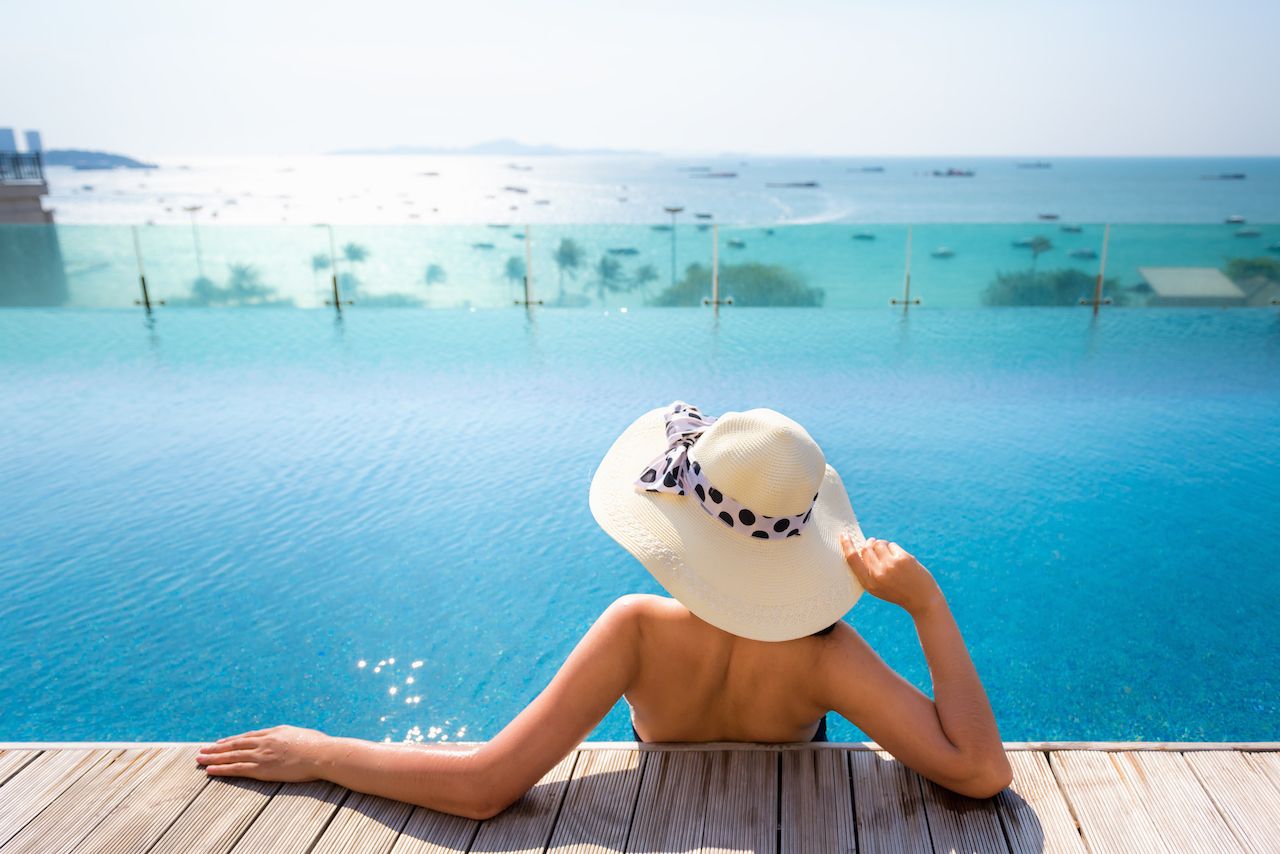
Photo: K.D.P/Shutterstock
Nusa Dua ticks all the classic honeymoon boxes: romantic five-star villas with the spas to match, candle-lit couples dinners, manicured beaches with overlooking golf courses, etc. There are some cultural and natural attractions outside the gated community where the resorts are, but Nusa Dua isn’t where you go to see Bali at its most authentic. It is, however, the perfect place to cozy up with your new spouse and completely forget that the rest of the world exists.
For the health and wellness scene: Ubud
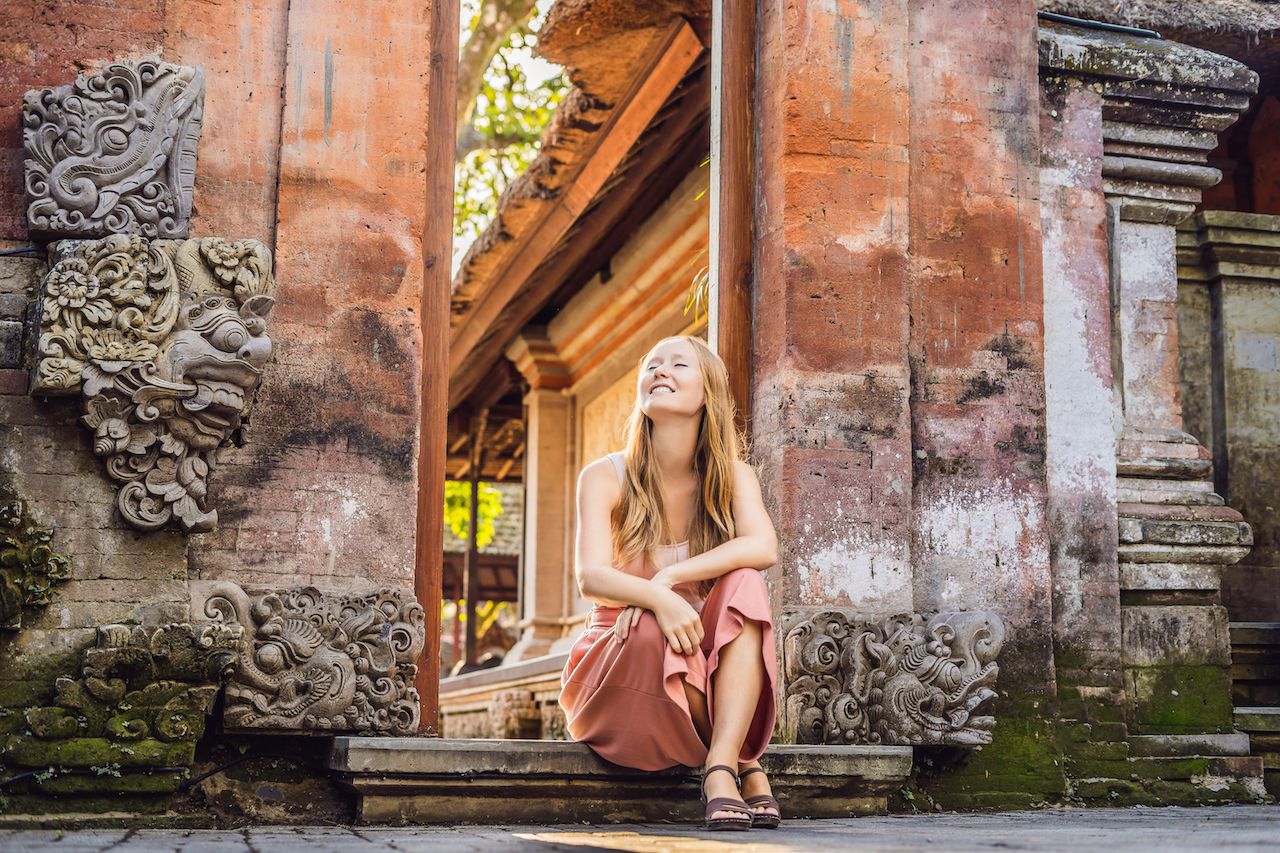
Photo: Elizaveta Galitckaia/Shutterstock
Equal emphasis on “health and wellness” and “scene.” Ubud is where you go to improve your yoga practice and up your acai berry intake but also flaunt those new flowy pants from Ubud Market up and down Monkey Forest Road. It’s always been considered a spiritual place, but anyone seeking a truly transformative experience might be disappointed in the amount of exposure (read: tourist traffic) it’s received over the years.
Instead, go for downward dog at sunrise followed by a vegan, vegetarian, raw, macrobiotic, or gluten-free breakfast. Spend afternoons cycling through rice terraces or falling asleep on massage tables, and end any day with a soothing meditation. To really lean into Ubud, try a multi-day juice cleanse, detox, or healing retreat hosted by The Yoga Barn.
For digital nomads: Canggu
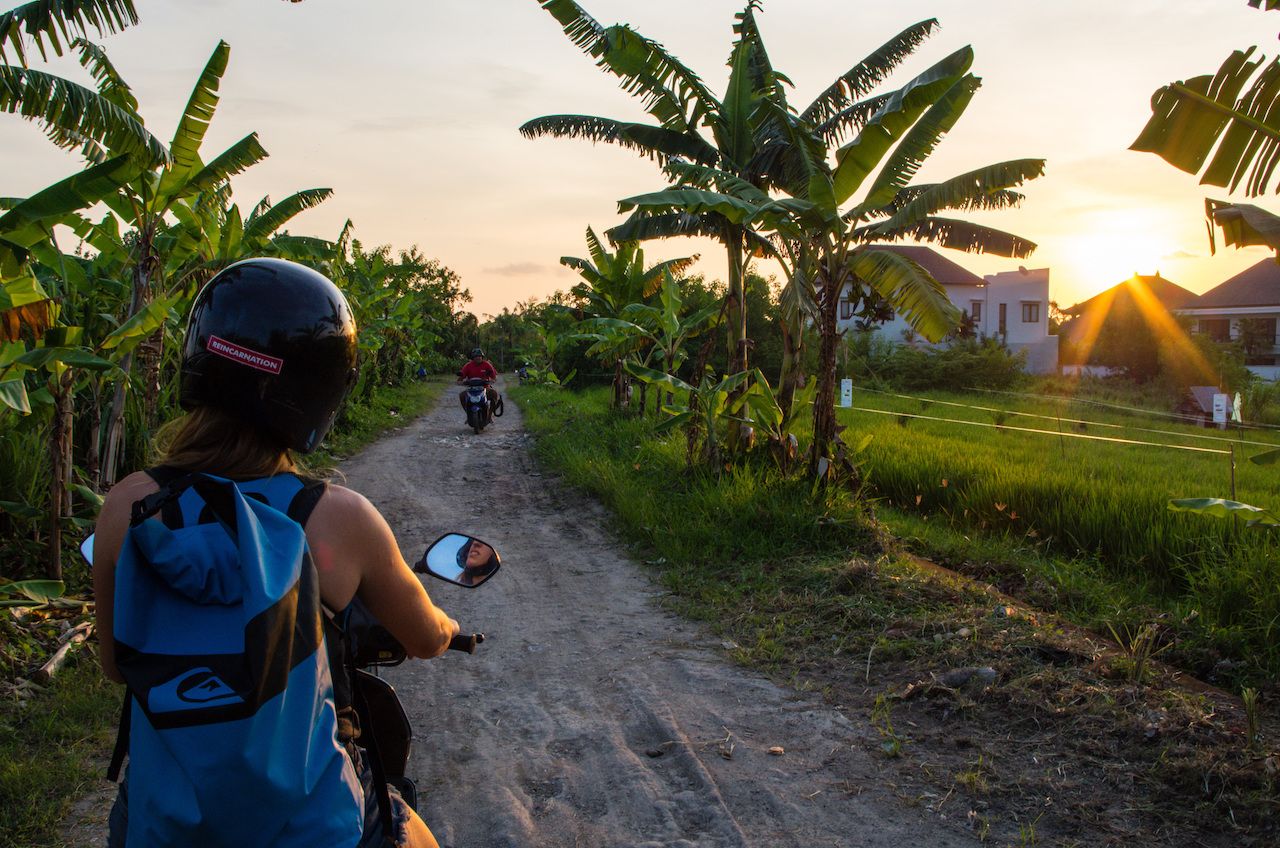
Photo: swuerfel/Shutterstock
Digital nomads don’t need much more than a laptop and reliable Wi-Fi, but it’s certainly nice to have coffee shops, coworking spaces, good food, nice yet affordable accommodations, and beaches to escape to when you can’t work anymore. So, basically Canggu. All types of travelers head this way, but it’s a safe bet most of them are traveling with their MacBooks. Canggu is young and hip, so don’t count out health food stores, skate parks, street art, beach bars, and even Crossfit. Plus everything about actual Bali that you can see as far as your motorbike will take you. The only thing you have to worry about here is actually getting your work done.
For snorkelers and scuba divers: Amed and Tulamben
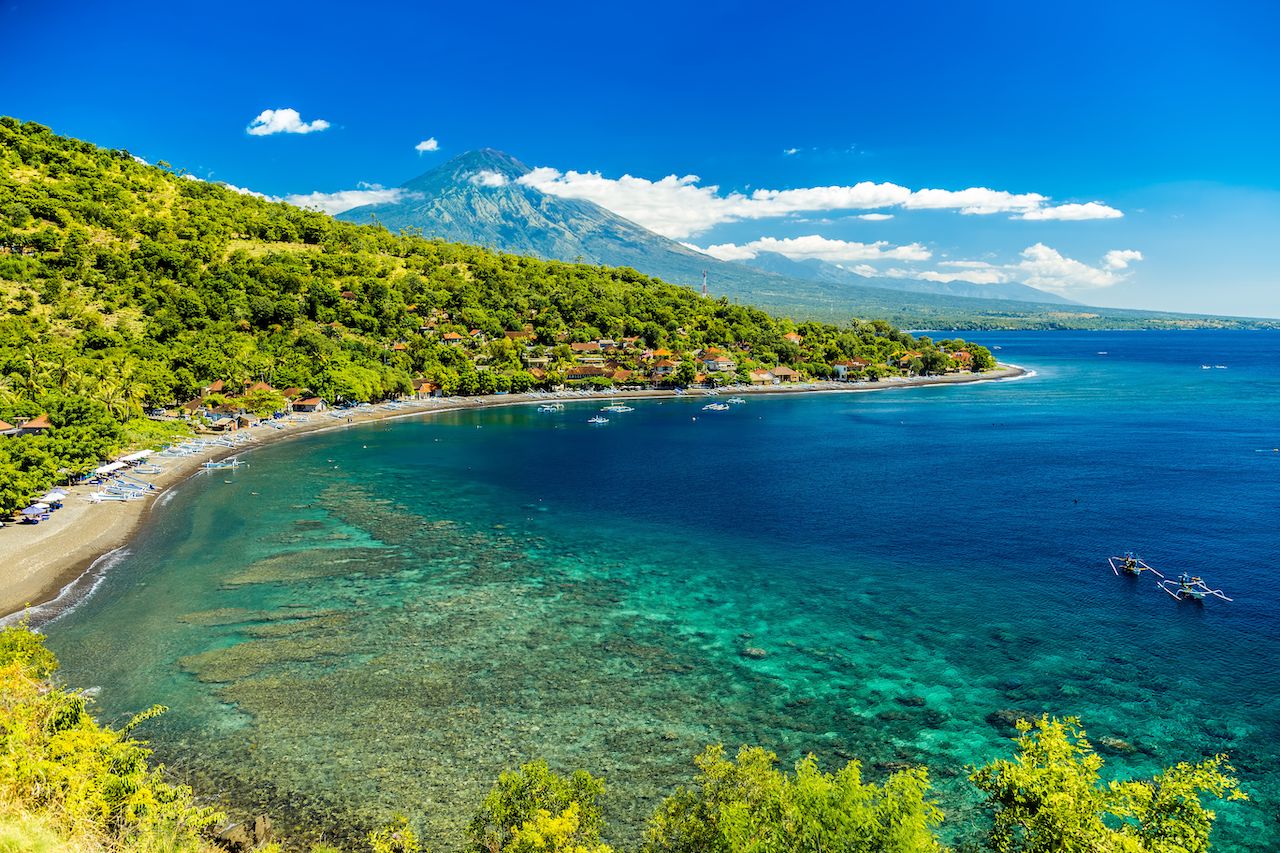
Photo: Valentin Ayupol/Shutterstock
The east coast of Bali is replete with snorkel and scuba sites. Chief among them are Amed and Tulamben, about 25 minutes from each other by car. Both are suitable for beginner divers yet entertaining enough for experienced underwater adventurers. Be sure to hit the Amed Wall and USAT Liberty shipwreck site in Tulamben. Wildlife commonly spotted here includes reef sharks, stingrays, turtles, and corals. Manta rays are a possibility, too. We recommend staying in Amed, which is actually a string of villages, as it has more for travelers than Tulamben.
For hidden-gem hunters: Munduk and Bedugul
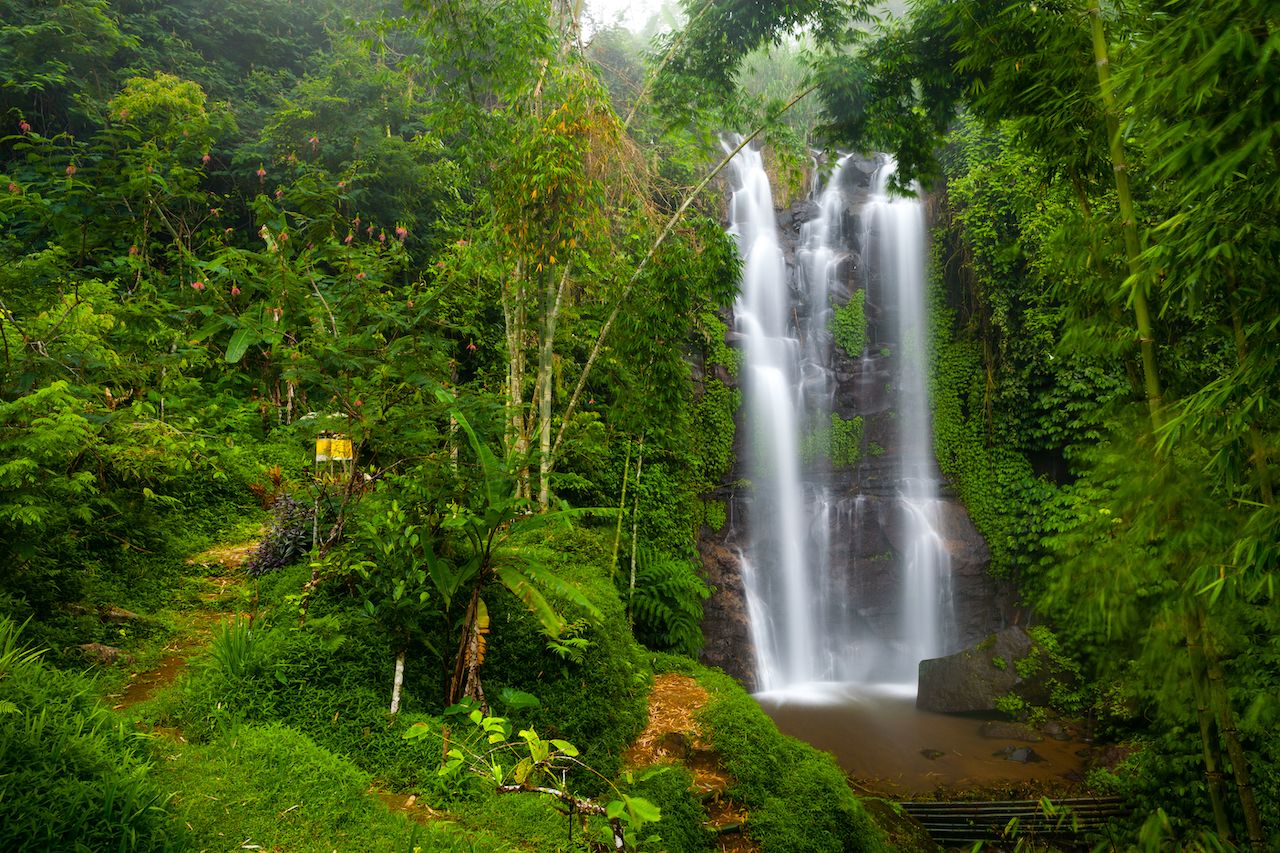
Photo: Cocos Bounty/Shutterstock
Munduk and Bedugul are the best-kept secrets of Bali. They’re not undiscovered (few places are), so they don’t come with the hassles of someplace really remote, but like much of North Bali, they’re off the radars of most visitors. How so many people miss Munduk’s jungle waterfalls, lake temples, coffee plantations, and rice fields is a mystery, but it means you won’t have to compete for a Dutch colonial mountain villa when you get there. In neighboring Bedugul, you’ll find much of the same scenery, even more lake temples, golf, and a beautiful botanical garden. Accommodations in the area range from cute and affordable to slightly pricey but nicer than you’d expect for the money.
For families: Sanur
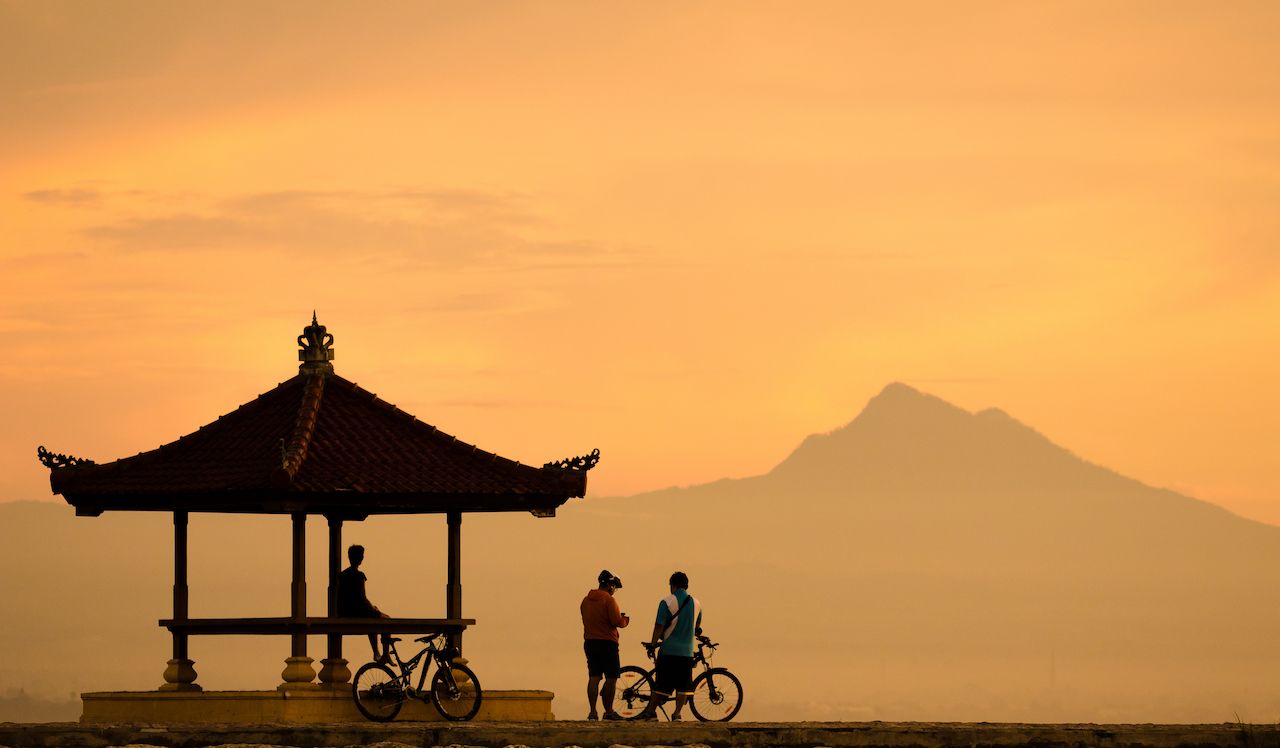
Photo: muhd fuad abd rahim/Shutterstock
Sanur is a one-size-fits-all resort in southeast Bali where it’s just as easy to do nothing as it is whatever else a family member could want, whether their vision of the ideal getaway favors culture, physical activity, or anything else. The shallow shore is sandwiched between a miles-long promenade, perfect for joggers and bike rides, and water calm enough for swimmers of all abilities. This makes it a good place to try kitesurfing, windsurfing, or just plain surfing.
The town is easy to navigate on foot, and there are plenty of restaurants everyone can agree on. There’s even a bit of nightlife for the big kids that’s easy enough to find if you go looking but not something you’ll notice otherwise. Plus, Sanur is only a 30-or-so minute drive from the airport, so the crew is less likely to be cranky on arrival after a presumably long and tiresome journey.
For culture hounds: Sidemen or Rendang
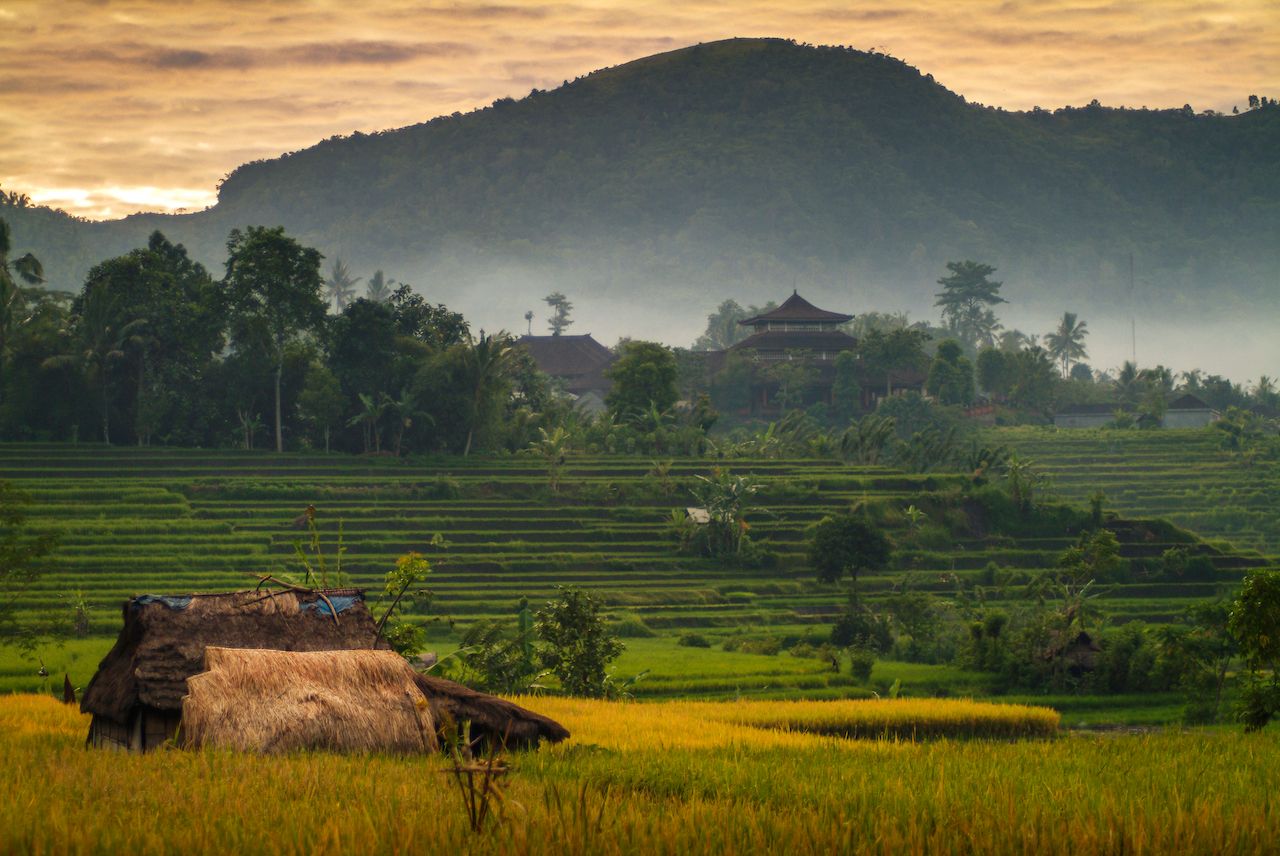
Photo: Edmund Lowe Photography/Shutterstock
Like beaches, temples are easy to come by in Bali. There’s only one mother temple, though, and that’s Pura Besakih. It’s the holiest Hindu site on the island and an impressive 20-plus-temple complex situated at the base of Mount Agung. You have to keep an eye out for scammers, but if you arrange a guide in advance rather than accepting one onsite or politely decline everything being peddled on a solo visit, it’ll be a profound experience.
Staying in the village of Besakih is tricky, so we recommend calling Rendang or Sidemen home. Rendang is closer to the temple, about 15 minutes by car, but Sidemen, about 40 minutes away, has more going on. Famous creatives have been drawn to the district ever since German artist Walter Spies spent time there in the 1930s, many of whom stayed at his house, now a hotel. There are more places to stay in Sidemen generally, particularly if your tastes skew expensive.
For the early-to-bed, early-to-hike folks: Kintamani
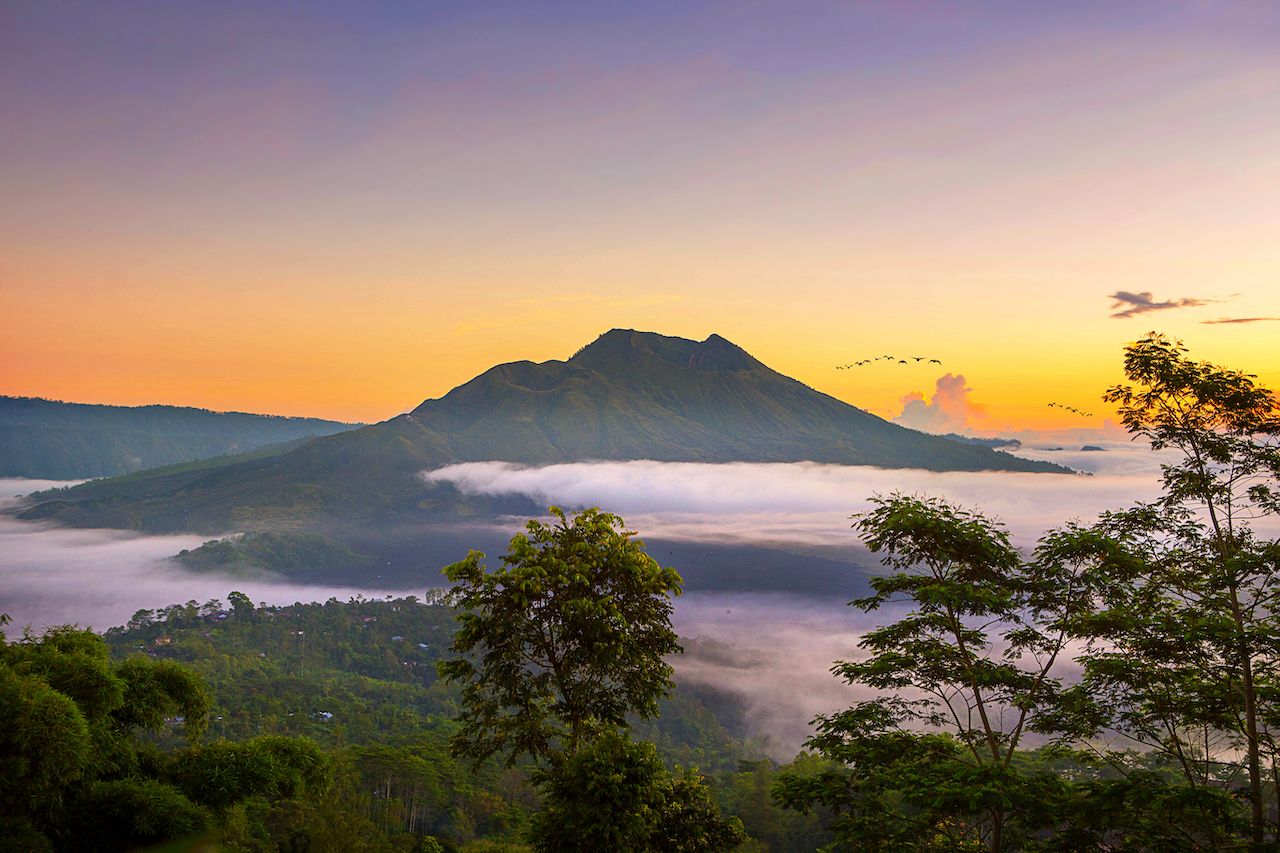
Photo: RizalPhoto/Shutterstock
Kintamani sits at the base of Mount Batur, an active volcano in northern Bali that visitors can’t seem to quit climbing. It’s not the tallest mountain on Bali — its highest point reaches 5,633 feet while Mount Agung, slightly southeast, gets up to 9,944 feet — but seeing the sunrise over Lake Batur at the top might be the best view on the island. And you don’t have to have Everest under your belt to climb Batur, doable in two to four hours depending on your fitness level.
When you’re not hiking, Kintamani has you covered with kayaking and canoeing, easy bike rentals, hot springs where you can soak your sore muscles, and even helicopter tours. Accommodations are generally affordable, and most come with lake views.